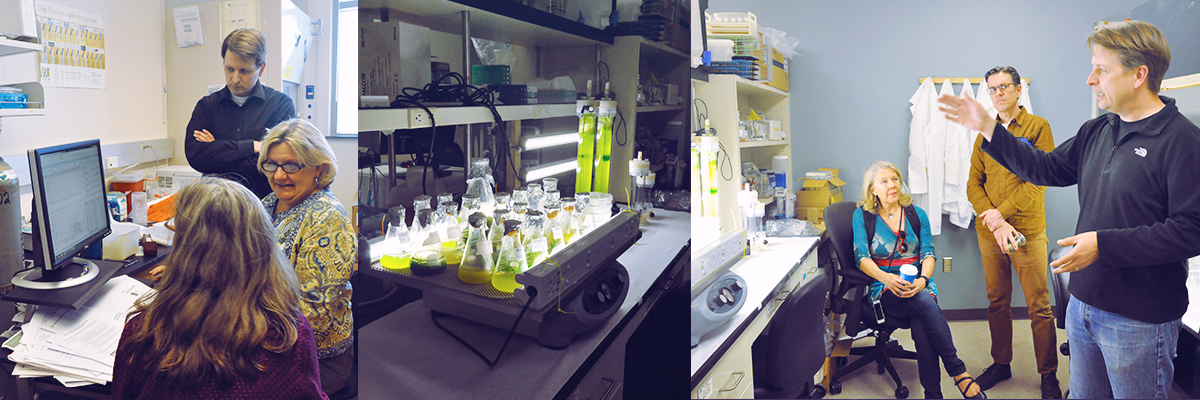NEWS
Dave Hanson Awarded Grants with ARPA-E and NSF

Dr. David Hanson, Bioalgal Energy co-lead for Energize New Mexico recently received two grants that fund collaborative efforts in energy and biology. These two grants alone will bring $1.2 million over 3 years into Dave's lab specifically, and a total of $3 million into New Mexico. Both grants were facilitated by EPSCoR.
The first, under the National Science Foundation's (NSF) Division of Integrative Organismal Systems (IOS), is "Collaborative Research: Recalibrating CO2 and water diffusion through leaves to improve models of photosynthetic responses to the environment" and will focus on using new methods to measure carbon dioxide in leaves and their resistance to movement of carbon dioxide into leaf cells. This will help improve knowledge about photosynthesis in changing environments as well as contribute to the development of crops that use water and nutrients more efficiently.
The second grant includes a partnership with Sandia National Laboratory as part of the Advanced Research Projects Agency-Energy (ARPA-E). ARPA-E's goal is to advance "high-potential, high-impact energy technologies that are too early for private-sector investment. ARPA-E awardees are unique because they are developing entirely new ways to generate, store, and use energy." Dave's grant is part of the Rhizosphere Observations Optimizing Terrestrial Sequestration, or "ROOTS" project under ARPA-E, which focuses on root systems as a key piece of removing carbon dioxide from the atmosphere and decrease nitrous oxide emissions while improving agricultural productivity. Dave's specific project under ROOTS is titled "Multi-Modal Monitoring of Plant Roots for Drought and Heat Tolerance in the U.S. Southwest":
The Sandia National Laboratories team will develop a set of technologies to link belowground carbon partitioning with aboveground photosynthetic measurements. They will use microneedle sensor technology, originally developed for medical applications such as glucose level monitoring, to non-destructively measure the transport and composition of plant sap and products of photosynthesis in the field. In addition, they will measure the soil chemistry near the root zone with a micro-gas chromatograph, a device used to separate and analyze in dividual compounds. Using data analytics and modeling, they will link these measurements together to find aboveground proxies for belowground processes. If successful, the project will allow for the selection of improved sorghum varieties with increased root biomass without excavation of roots.
Congrats Dave, and good luck! You can view more information about the IOS grant on the NSF IOS website, and about the new ROOTS projects on the ARPA-E website.


